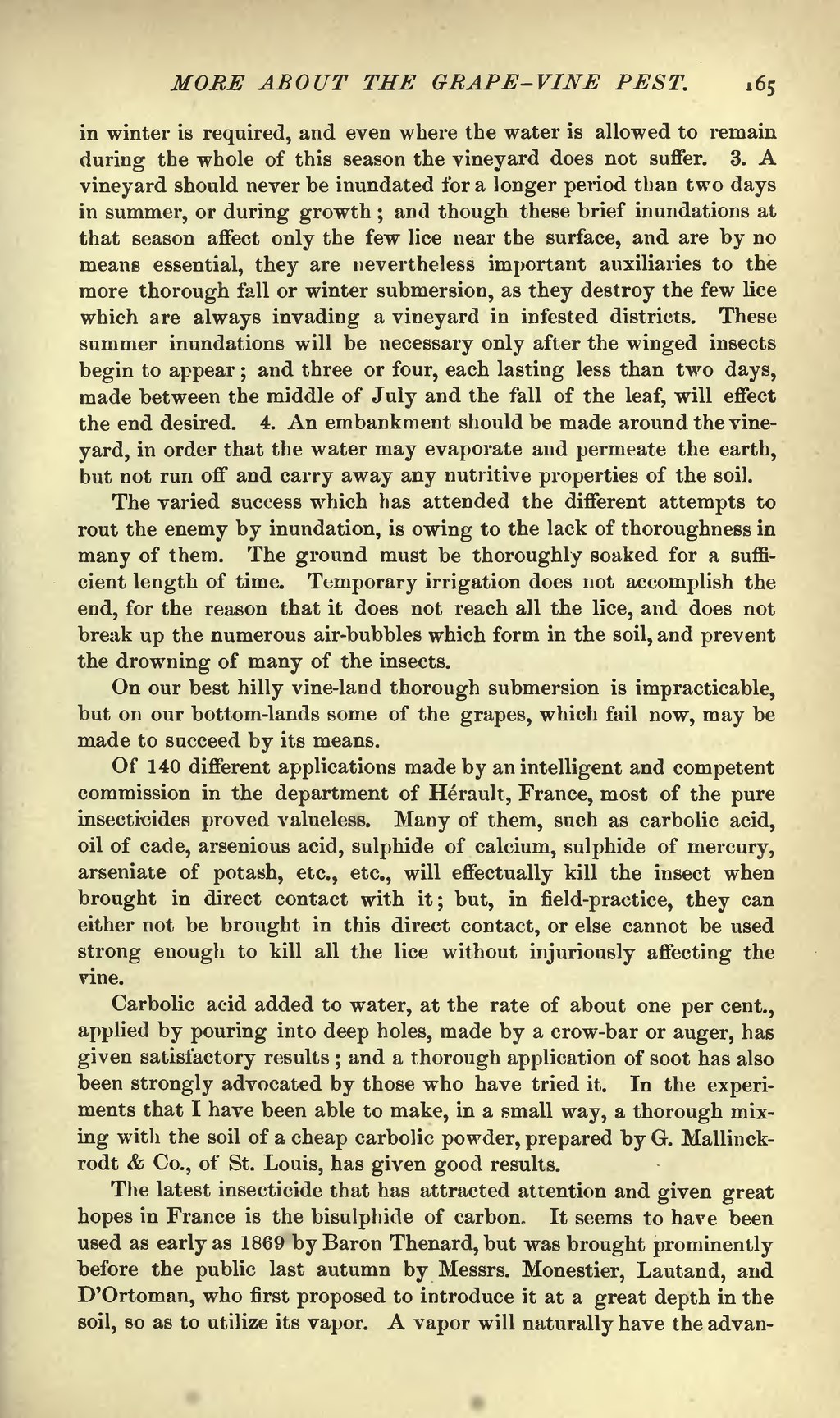in winter is required, and even where the water is allowed to remain during the whole of this season the vineyard does not suffer. 3. A vineyard should never be inundated for a longer period than two days in summer, or during growth; and though these brief inundations at that season affect only the few lice near the surface, and are by no means essential, they are nevertheless important auxiliaries to the more thorough fall or winter submersion, as they destroy the few lice which are always invading a vineyard in infested districts. These summer inundations will be necessary only after the winged insects begin to appear; and three or four, each lasting less than two days, made between the middle of July and the fall of the leaf, will effect the end desired. 4. An embankment should be made around the vineyard, in order that the water may evaporate and permeate the earth, but not run off and carry away any nutritive properties of the soil.
The varied success which has attended the different attempts to rout the enemy by inundation, is owing to the lack of thoroughness in many of them. The ground must be thoroughly soaked for a sufficient length of time. Temporary irrigation does not accomplish the end, for the reason that it does not reach all the lice, and does not break up the numerous air-bubbles which form in the soil, and prevent the drowning of many of the insects.
On our best hilly vine-land thorough submersion is impracticable, but on our bottom-lands some of the grapes, which fail now, may be made to succeed by its means.
Of 140 different applications made by an intelligent and competent commission in the department of Hérault, France, most of the pure insecticides proved valueless. Many of them, such as carbolic acid, oil of cade, arsenious acid, sulphide of calcium, sulphide of mercury, arseniate of potash, etc., etc., will effectually kill the insect when brought in direct contact with it; but, in field-practice, they can either not be brought in this direct contact, or else cannot be used strong enough to kill all the lice without injuriously affecting the vine.
Carbolic acid added to water, at the rate of about one per cent., applied by pouring into deep holes, made by a crow-bar or auger, has given satisfactory results; and a thorough application of soot has also been strongly advocated by those who have tried it. In the experiments that I have been able to make, in a small way, a thorough mixing with the soil of a cheap carbolic powder, prepared by G. Mallinckrodt & Co., of St. Louis, has given good results.
The latest insecticide that has attracted attention and given great hopes in France is the bisulphide of carbon. It seems to have been used as early as 1869 by Baron Thenard, but was brought prominently before the public last autumn by Messrs. Monestier, Lautand, and D'Ortoman, who first proposed to introduce it at a great depth in the soil, so as to utilize its vapor. A vapor will naturally have the advan-
